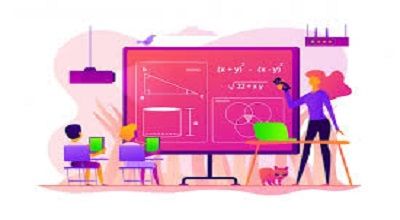Elements Of A Digital Classroom
The elements of a digital classroom refer to a learning environment that incorporates technology to enhance the teaching and learning experience. The elements of a digital classroom can vary depending on the specific tools and technologies used, but some common components include:
Hardware:
- Computers or Laptops: Both teachers and students need to access digital resources and participate in online activities.
- Tablets: Useful for interactive and hands-on activities, especially in early education.
- Interactive Whiteboards: Replace traditional chalkboards, allowing for interactive presentations and collaborative learning.
Internet Connectivity:
- High-speed Internet: Reliable Internet connectivity is crucial for accessing online resources, conducting research, and participating in virtual classrooms.
Software and Applications:
- Learning Management System (LMS): Platforms like Moodle, Canvas, or Google Classroom help manage course content, assignments, and communication.
- Collaboration Tools: Tools like Microsoft Teams, Zoom, or Google Meet facilitate real-time communication, video conferencing, and collaboration among students and teachers.
- Educational Apps: Various apps cater to specific subjects or skills, providing interactive and engaging learning experiences.
Digital Content:
- E-books and Online Textbooks: Digital textbooks and resources provide easy access to a wealth of information.
- Multimedia Content: Educational videos, simulations, and interactive content enhance understanding and engagement.
- Open Educational Resources (OER): Free and openly licensed materials that can be used for teaching, learning, and research.
Assessment Tools:
- Online Quizzes and Tests: Digital assessment tools help in evaluating students’ understanding and progress.
- Automated Grading Systems: Streamline the grading process and provide timely feedback to students.
Virtual Learning Environments:
- Virtual Labs: Simulations and virtual experiments enhance practical learning in subjects like science and engineering.
- Virtual Field Trips: Explore different places and cultures through virtual experiences.
Cloud Storage:
- Google Drive, OneDrive, Dropbox: Cloud storage platforms facilitate easy sharing and access to documents and collaborative projects.
Security Measures:
- Firewalls and Antivirus Software: Protect against cybersecurity threats to ensure a safe online learning environment.
- Secure Login Credentials: Implement secure authentication to safeguard user data and privacy.
Professional Development:
- Training Programs: Ongoing professional development for teachers to stay updated on new technologies and effective integration strategies.
Accessibility Features:
- Assistive Technologies: Ensure that the digital classroom is accessible to students with diverse learning needs.
Communication Channels:
- Discussion Forums and Chat: Platforms for asynchronous communication and discussion among students.
- Email and Messaging Systems: Facilitate communication between teachers, students, and parents.
Support Services:
- Technical Support: Ensure there is a system in place to address technical issues promptly.
- Helpdesk or FAQ Resources: Provide resources for common troubleshooting and FAQs.
By combining these elements, educators can create a dynamic and effective digital classroom that promotes interactive learning, collaboration, and engagement.
